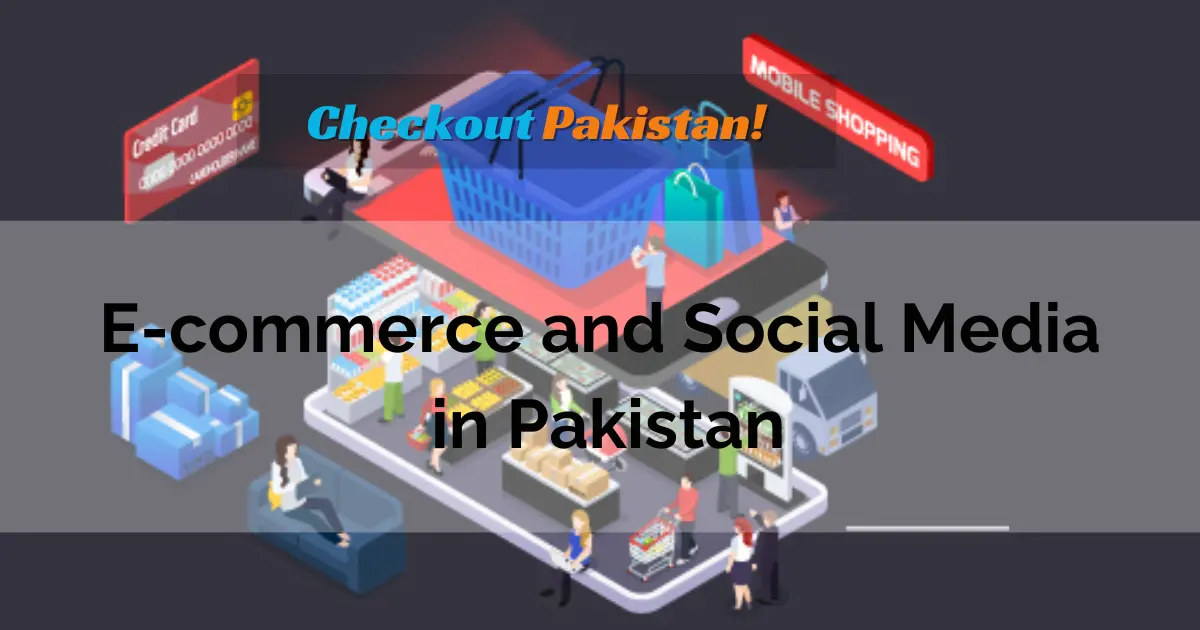E-commerce and Social Media in Pakistan are driving a significant transformation in the digital landscape, playing pivotal roles in reshaping consumer behavior. This article explores how these two elements are influencing Pakistani consumerism, the trends shaping the industry, and the implications for businesses and consumers alike.
The Rise of E-commerce in Pakistan
E-commerce in Pakistan has witnessed a commendable surge in growth over the past few years, with a growth rate of 30-35% in the last three years. This growth is attributed to the rising number of internet users and the recent pandemic, which has catalyzed the shift towards a digital lifestyle.
Popular e-commerce platforms like Daraz, Shophive, Telemart, GOTO, Homeshopping, and iShopping are revolutionizing the retail sector. The e-commerce sector has primarily focused on consumer products and accessories, with online customers searching for and purchasing consumer electronics, making employment queries, receiving online education, and gathering information on vehicles.

E-commerce has transformed how consumers research, evaluate, and purchase products. Over 68% of Pakistan’s online population has started shopping online in the last three years. By embracing diverse payment methods and nationwide logistics, e-commerce portals are cultivating digital transactions.
The Influence of Social Media
Social media platforms such as Facebook, Instagram, and TikTok are widely used in Pakistan, with businesses leveraging these platforms to reach potential customers. There are more than 7.3 million Facebook users in Pakistan, and several local companies now use social media to promote their products.
Research has shown that social media and electronic word of mouth have a strong influence on customer loyalty and purchase intention. The use of promotional tools, online reviews, and celebrity endorsements on social media platforms have been found to have positive correlations with online shopping behavior in Pakistan.
The symbiotic relationship between social media and e-commerce has fostered the rise of social commerce. This involves leveraging platforms like Facebook and Instagram to advertise and sell products through shoppable posts, influencer marketing and user-generated content. Social commerce is helping businesses forge deeper connections with customers.
The Intersection of E-commerce and Social Media In Pakistan
The intersection of e-commerce and social media is creating a new paradigm in Pakistani consumerism. Businesses are using social media platforms to market their products and services, monitor their competitors’ activities, and engage with their target audience.
Moreover, the rise of mobile commerce or m-commerce is a defining trend in Pakistan’s e-commerce journey. With a high mobile penetration rate, Pakistan is a mobile-first nation, making it imperative for businesses to optimize their websites and content for mobile devices.
Additionally, the growth of mobile commerce (m-commerce) in Pakistan is contributing to this new consumer paradigm. Explore how mobile commerce is shaping a new shopping era.
Changing Consumer Attitudes and Behaviors
Pakistani consumer attitudes and behaviors have profoundly evolved in the digital age. Consumers are increasingly self-driven, seeking convenience, personalization, and rich product information. Online shopping saves time and effort compared to traditional retail formats.
The COVID-19 pandemic has also accelerated adoption of contactless online shopping and cashless payments. Over 87% of consumers now prefer buying necessities online with home deliveries. Digital connectivity has made consumers more quality and value-conscious as well.
As consumers seek convenience and rich product information, mastering online shopping tips becomes essential. Explore our Ultimate Guide to Online Shopping Tips in Pakistan for valuable insights.
Challenges Hindering Progress
However, inadequate digital literacy, especially in rural regions, distrust in online payments, substandard logistics infrastructure outside major cities, and lack of institutional e-commerce support continue to impede market maturity. Data privacy and security concerns also contribute to consumer wariness.
Addressing challenges such as online payment distrust, it’s crucial to understand the role of payment gateways in ensuring secure transactions. Read our comprehensive E-commerce Guide on payment gateways in Pakistan.
The Future of E-commerce and Social Media in Pakistan
The future of e-commerce and social media in Pakistan looks promising. The middle class is expected to double by 2030, reaching 100 million people, presenting an opportunity for e-commerce businesses to target a growing market of consumers.
Furthermore, the number of social media users in Pakistan is also on the rise. As of January 2023, there were around 46.44 million Facebook users, 13.91 million Instagram users, and 25.2 million TikTok users in Pakistan. This growing digital population presents a vast opportunity for businesses to reach and engage with their target audience.
Conclusion
E-commerce and social media are reshaping Pakistani consumerism, offering businesses new avenues to reach and engage with consumers. As these trends continue to evolve, businesses that adapt and leverage these platforms effectively will be well-positioned to thrive in the digital marketplace.
